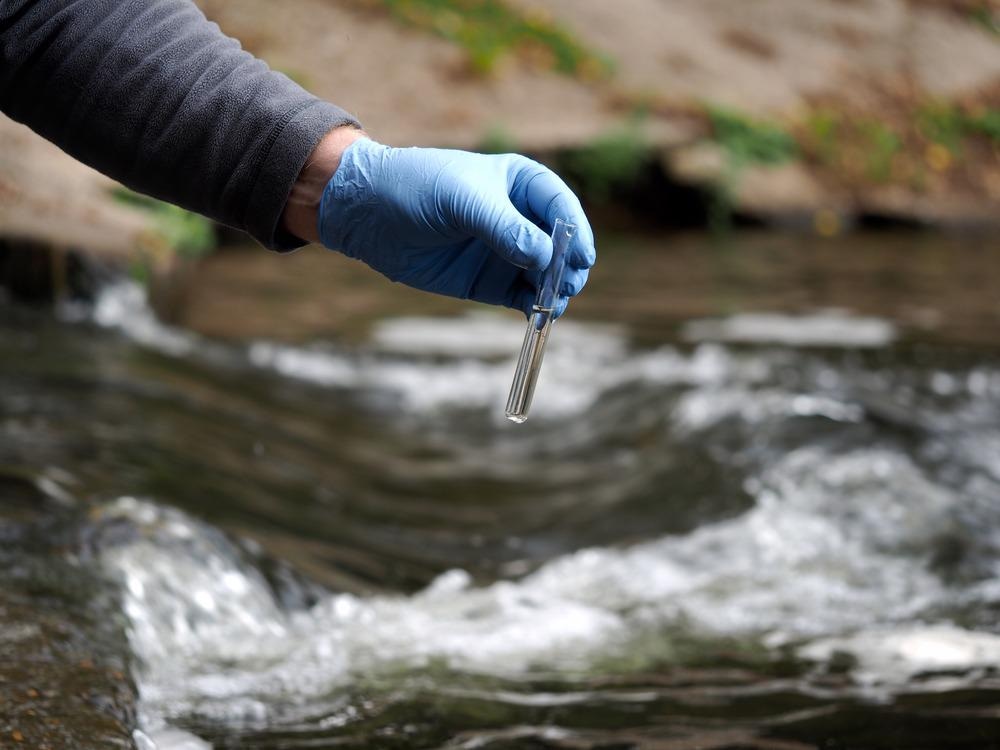The application of visible-driven photocatalysts for wastewater remediation has aroused interest as a viable and long-term approach. A paper published in the journal Environmental Research discussed the hydrothermal fabrication of BiOBr/carbon quantum dot (CQDs) composite and its application in the degradation of wastewater bacteria.

Study: Efficient photocatalytic degradation of emerging ciprofloxacin under visible light irradiation using BiOBr/carbon quantum dot/saponite composite. Image Credit: Irina Kozorog/Shutterstock.com
Two Dimensional (2D) Photocatalysts
As it utilizes sunlight as an energy source, photocatalysis is a viable option for sustainable energy restoration. Due to their large surface area and strong light absorption, 2D photocatalysts have gained popularity.
2D photocatalysts yield a wide surface contact for other common catalyst shapes. 2D bismuth oxyhalides are utilized as photocatalysts in natural wastewater treatment due to their excellent catalytic characteristics and flexibility of production.
Limitations of BiOBr and Modifications
Thanks to its small energy band gap, BiOBr is an excellent photocatalyst that may also be obtained under visible sunlight. However, due to strong light-induced charge dispersion, the actual usefulness of pure BiOBr is limited. Numerous BiOBr modifications, including stability analysis, component filling, and hetero-structure designs that promote charge carrier dispersion, have been disclosed.
Doping BiOBr photocatalysts with Zn atoms has led to decreased dispersion of light generated charge carriers, and the filled sample displayed viewable photocatalytic water scattering and natural dye degradation. Furthermore, an in-situ Bi-decorated BiOBr photocatalyst has been reported to enhance the activity of various medications in polluted water.
Employing semiconductors in conjunction with nanomaterials and carbon- based materials can improve photocatalytic efficiency while addressing shortcomings of using the catalysts in their pure or isolated form. Nanomaterials may form junctions at the semiconductor-metal nanoparticle interface, allowing particles to travel in the desired direction.
Z-Scheme Photocatalysts
Based on Z-scheme, photocatalysts, which are made by rationally integrating two narrow band-gap semiconductors, may efficiently distinguish photo-induced carriers while keeping strong redox properties and a larger spectrum of sunlight absorption.
Z-scheme compounds have similar architecture and charge transport channels to interrupted gap heterojunction photocatalysts. Still, the charge transport migration method is distinctive because the Z-scheme charge carrier movement sequence mimics the letter "Z."
CQD’s and its uses in nanocomposites
CQDs are also being employed as photocatalysts or catalysts in photocatalysts. When exposed to ultraviolet radiations, CQDs can accept electrons, limiting charge carrier combinations.
CQDs are inexpensive materials that have high fluorescence, durability and resistivity, resulting in their use in applications like catalysts due to their high viewable retention and charge transfer.
Aggregation of CQDs particles, on the other hand, impaired their reflectivity. Clay minerals can be an attractive substrate for CQDs due to their wide band gap, chemical inertness, high capacitance intensity, and prospective 2D form.
The produced composites' photocatalytic activity toward the breakdown of ciprofloxacin (CIP) was examined and then compared to that of pure BiOBr, which is widely used to treat infections caused by bacteria.
Important Findings of the Study
The hydrothermal approach was used to successfully synthesize CQDs/Clay@BiOBr materials with outstanding charge separation performance, visible-light absorption, and photocatalytic efficiency.
The optimal results were achieved with CQDs/Clay(IS)@BiOBr-50, having twice the photocatalytic performance compared to the pure form of BiOBr.
The photocatalytic performance of these substances was found to be affected by various production techniques of CQDs/Clay. Compared to other previously reported photocatalysts, CQDs/Clay(IS)@BiOBr-50 had the highest proficiency for photocatalytic disintegration of CIP.
The addition of CQDs and clay to these composites leads to a heterojunction among CQDs/Clay and BiOBr, which improves charge transfer and separation, resulting in increased photocatalytic degradation performance of CIP.
Key Takeaways
The saponite functions as a core for proper distribution of nano CQDs and 2D BiOBr as well as helping to reduce recombination of photo-generated charge in the substance, resulting in increased photocatalytic destruction, under the condition of visible light radiation, of CIP.
When tested against E. coli, the photocatalyzed products had decreased bio-toxicity than that of the initial CIP solution. This paper brings a novel approach to the fabrication and design of CQD-decorated clay materials that may be utilized as wastewater photocatalysts when exposed to visible light.
Reference
Chuaicham, C., Sekar, K. et al. (2022). Efficient Photocatalytic Degradation of Emerging Ciprofloxacin under Visible Light. Environmental Research. Available at: https://doi.org/10.1016/j.envres.2022.113635
Disclaimer: The views expressed here are those of the author expressed in their private capacity and do not necessarily represent the views of AZoM.com Limited T/A AZoNetwork the owner and operator of this website. This disclaimer forms part of the Terms and conditions of use of this website.